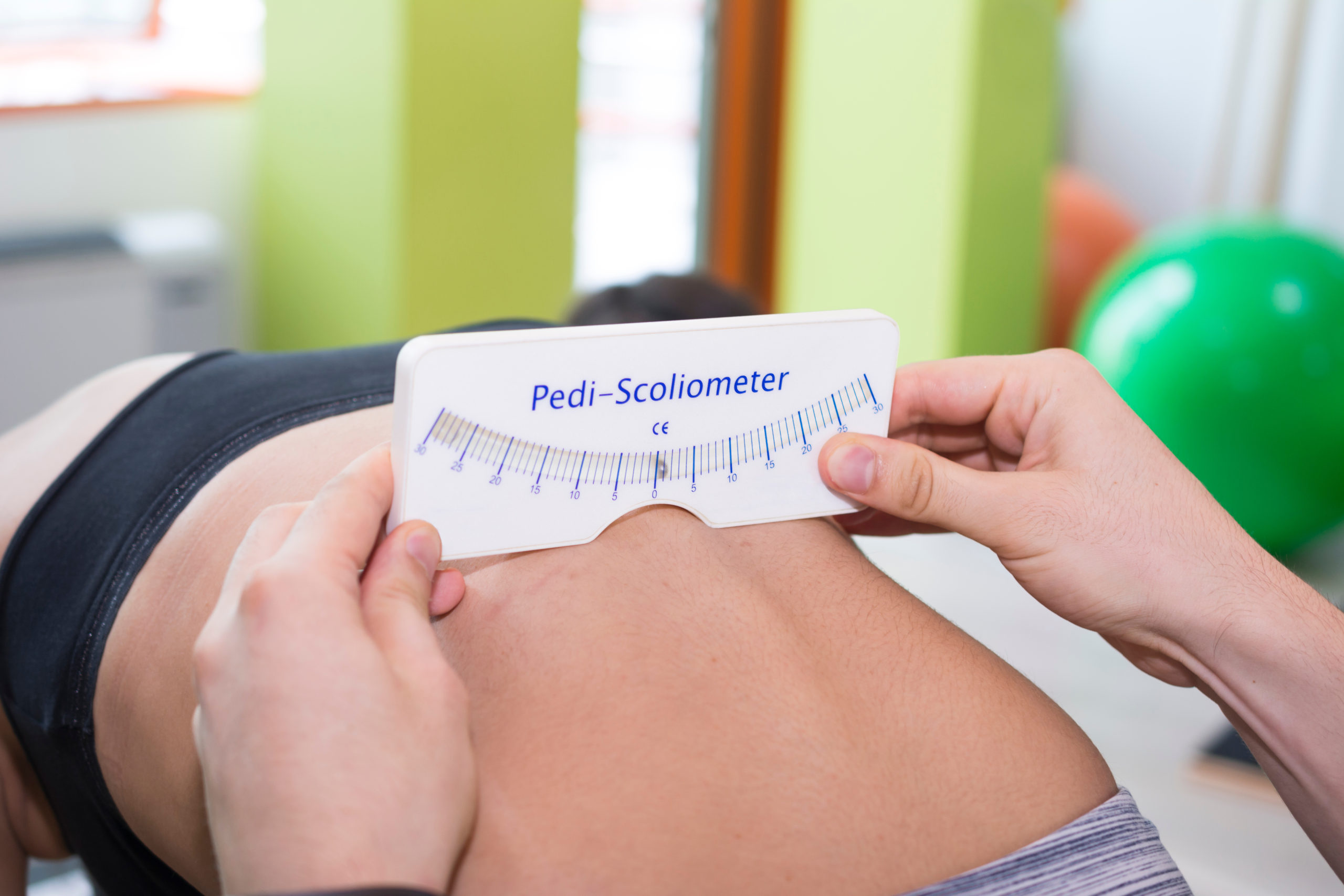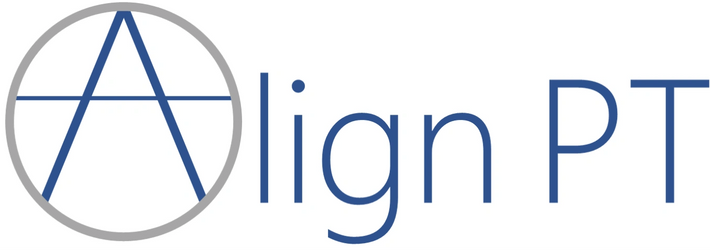Research shows that physiotherapeutic scoliosis specific exercises (PSSE) such as the Schroth Method and BSPTS Rigo Concept provide many benefits for those with scoliosis.
RESEARCH SUPPORTS SCOLIOSIS SPECIFIC PHYSICAL THERAPY
Here's What the Research Shows
PSSE reduces prevalence of surgical intervention:
- Patients were 5x more likely to have surgery if they didn’t participate in PSSE. A 2003 study of over 100 patients 15 years or older with AIS found a significant difference in the prevalence of surgery; in the Schroth Method and bracing group, 5.6% ultimately had spinal fusion compared to 28.1% in the non-intervention group.1
PSSE reduces or eliminates pain:
- In a study with 311 patients, 80% of them reduced or eliminated pain following participation in a Schroth Program – of that 80%, 43.7% had complete elimination of pain.15

PSSE reduces the Cobb angle:
- A 2018 systematic review looking at the effectiveness of PSSE and the Schroth Method found that Schroth PSSE can improve Cobb angle, angle of trunk rotation (ATR), and improve muscle endurance and lung capacity.2
- A 2021 study by Kocaman et al found that the Schroth group had a greater improvement in Cobb angle, ATR, cosmetic trunk deformity, spinal mobility, and quality of life than the control group which performed traditional core strengthening.3
- Kuru et al (a randomized controlled trial) found that a Schroth in clinic exercise group had a reduced Cobb angle and a reduced ATR compared to a control group and a group of participants who performed a home program only without in-clinic supervision.4
- Monticone et al (a randomized controlled trial) found that the PSSE group had a reduction in Cobb angle of >5 degrees and was maintained at 1 year of follow-up compared to a control group which only maintained their Cobb angle. The PSSE group also reported a better health related quality of life and demonstrated improved ATR.5
- Meta analysis of 15 studies found a high effect size for Schroth method treatment. They found that Schroth exercises were effective at improving core muscle strength and reducing spinal deformity. They recommended patients perform their exercises for at least 1 month to see these effects and recommended completing a daily home exercise program.6
- Schroth PSSE was found to be effective for reducing the Cobb angle and ATR in patients who are braced and those who are not braced. This may indicate that PSSE can be an effective early intervention strategy for patients with curvature that is not severe enough to recommend bracing and can also be a safe and effective treatment to use in conjunction with bracing.7
- A 2005 study found that PSSE improved Cobb angles and vital capacity in patients with scoliosis.8
- A study of over 100 patients looking at curvatures on X-ray pre/post treatment found that 43.93% of patients undergoing Schroth Method treatment had an improvement in Cobb angle by >5 degrees.14

PSSE stabilizes the curve and prevents curve worsening/progression:
- A recent study looking at BSPTS Rigo Concept based on the principles of Schroth found that the group participating in BSPTS Rigo Concept PSSE had maintained a stable Cobb angle at 1 year of follow-up while a control group experienced worsening of their curves.9
- Kuznia et al recently summarized evidence for treating AIS and recommended that bracing and PSSE may be effective at slowing the progression of scoliosis.10
- A 2003 study looked at incidence of progression in two independent age/gender matched groups starting at time of diagnosis. Untreated patients progressed 1.5-2.9x more than those treated by the Schroth Method PSSE.11
- A study with 181 scoliosis patients with an average Cobb angle of 27 degrees, average age of 12.7, and a risser score 1.4 showed no curve progression at 33 months (as defined by 5+ deg/year).12 This is compared to the reported 23.2% incidence of progression in a study of 727 patients with AIS who had no treatment.13
PSSE can improve quality of life and self-image:
- Studies suggest that not only can PSSE treatment improve physical outcomes such as Cobb angle and angle of trunk rotation among other objective measures, but that individuals participating in PSSE treatment can experience improvements in muscle endurance, health-related quality of life, and self-image.5,16
PSSE can reduce the need for bracing:
- A recent study of a form of PSSE called SEAS found that the treatment group performing PSSE was able to reduce the prescription of bracing compared to a control group who participated in traditional (not scoliosis-specific) physical therapy.17
PSSE improves vital capacity and lung capacity:
- Schroth Method PSSE has been shown to increase vital capacity by 14-19% in a study of 813 patients.18
PSSE is beneficial even after spinal fusion surgery:
- Spinal fusion does not eliminate the need for physical therapy to correct patients’ posture and maintain stability above and below the fused segment.19
References
[1] Rigo M, Reiter Ch, Weiss HR. “Effect of conservative management on the prevalence of surgery in patients with adolescent idiopathic scoliosis.” Pediatric Rehabilitation 2003 Jul-Dec;6(3-4):209-14.
[2] Ceballos Laita L, Tejedor Cubillo C, Mingo Gómez T, Jiménez Del Barrio S. Effects of corrective, therapeutic exercise techniques on adolescent idiopathic scoliosis. A systematic review. Arch Argent Pediatr. 2018 Aug 1;116(4):e582-e589. English, Spanish.
[3] Kocaman H, Bek N, Kaya MH, Büyükturan B, Yetiş M, Büyükturan Ö. The effectiveness of two different exercise approaches in adolescent idiopathic scoliosis: A single-blind, randomized-controlled trial. PLoS One. 2021 Apr 15;16(4):e0249492.
[4] Kuru T, Yeldan I, Dereli EE, Özdinçler AR, Dikici F, Colak I. The efficacy of three-dimensional Schroth exercises in adolescent idiopathic scoliosis: a randomized controlled clinical trial. Clin Rehabil. 2016;30(2):181–190.
[5] Monticone M, Ambrosini E, Cazzaniga D, Rocca B, Ferrante S. Active self-correction and task-oriented exercises reduce spinal deformity and improve quality of life in subjects with mild adolescent idiopathic scoliosis. Results of a randomised controlled trial. Eur Spine J. 2014;23(6):1204–1214.
[6] Park JH, Jeon HS, Park HW. Effects of the Schroth exercise on idiopathic scoliosis: a meta-analysis. Eur J Phys Rehabil Med. 2018 Jun;54(3):440-449. doi: 10.23736/S1973-9087.17.04461-6. Epub 2017 Oct 2. PMID: 28976171.
[7] Rrecaj-Malaj S, Beqaj S, Krasniqi V, Qorolli M, Tufekcievski A. Outcome of 24 Weeks of Combined Schroth and Pilates Exercises on Cobb Angle, Angle of Trunk Rotation, Chest Expansion, Flexibility and Quality of Life in Adolescents with Idiopathic Scoliosis. Med Sci Monit Basic Res. 2020 Apr 13;26:e920449.
[8] Otman S, Kose N, Yakut Y. The efficacy of Schroth s 3-dimensional exercise therapy in the treatment of adolescent idiopathic scoliosis in Turkey. Saudi Med J. 2005 Sep;26(9):1429-35. PMID: 16155663.
[9] Zapata, Karina A. DPT, PhD; Sucato, Daniel J. MD, MS; Jo, Chan-Hee PhD. Physical Therapy Scoliosis-Specific Exercises May Reduce Curve Progression in Mild Adolescent Idiopathic Scoliosis Curves. Pediatric Physical Therapy: July 2019 – Volume 31 – Issue 3 – p 280-285.
[10] Kuznia AL, Hernandez AK, Lee LU. Adolescent Idiopathic Scoliosis: Common Questions and Answers. Am Fam Physician. 2020 Jan 1;101(1):19-23.
[11] Weiss HR, Weiss G, Petermann F. “Incidence of curvature progression in idiopathic scoliosis patients treated with scoliosis in-patient rehabilitation (SIR): an age-and sex-matched controlled study.” Pediatric Rehabilitation 2003.Jan-Mar;6(1):23-30.
[12] Weiss HR, Lohshmidt K, el-Obeidi N, Verres C. “Preliminary results and worst-case analysis of in-patient scoliosis rehabilitation.” Pediatric Rehabilitation 1997 Vol. 1(1):35-40.
[13] Lonstein JE, Carlson JM. “The prediction of curve progression in untreated idiopathic scoliosis during growth.” J Bone Joint Surg Am 1984.Sept;66(7):1061-71.
[14] Weiss HR. “Influence of an in-patient exercise program on scoliotic curve.” Italian Journal of Orthopedic Traumatology. 1992,18(3):395-406.
[15] Weiss HR. “Scoliosis-related pain in adults: Treatment influences.” European Journal of Physical Medicine and Rehabilitation 3/3(1993):91-94.
[16] Schreiber S, Parent EC, Moez EK, et al. The effect of Schroth exercises added to the standard of care on the quality of life and muscle endurance in adolescents with idiopathic scoliosis-an assessor and statistician blinded randomized controlled trial: “SOSORT 2015 Award Winner”. Scoliosis. 2015 Sep 18;10:24.
[17] Negrini S, Zaina F, Romano M, Negrini A, Parzini S. Specific exercises reduce brace prescription in adolescent idiopathic scoliosis: a prospective controlled cohort study with worst-case analysis. J Rehabil Med. 2008;40(6):451–455.
[18] Weiss, HR. “The effect of an exercise program on vital capacity and rib mobility in patients with idiopathic scoliosis.” Spine Vol. 16(1/1991).
[19] Lehnert-Schroth, Christa. “Physiotherapy for scoliosis patients following spinal fusion surgery.” Krankengymnastik 48(1996):212-19.
